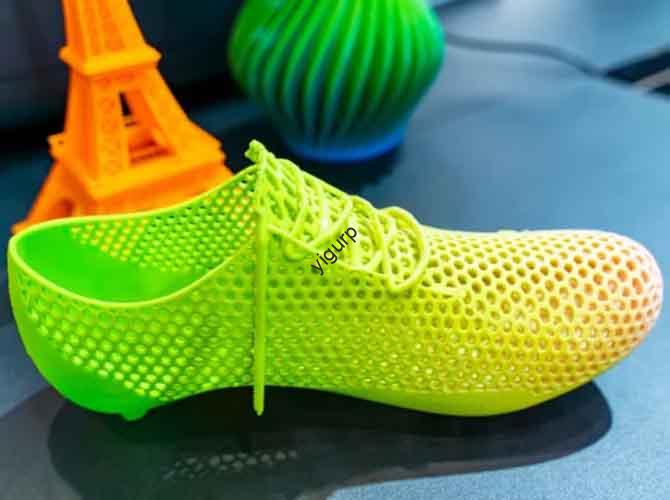In 3D printing, choosing the right material can make or break a part’s performance. For applications needing strength, durability, and versatility, 3D Printing PA6 (Polyamide 6) stands out. This material solves common pain points—like fragile parts, poor wear resistance, or limited use in harsh environments—that plague other 3D printing plastics. Let’s explore its key features, real-world uses, and how to overcome its few challenges.
1. Core Advantages of 3D Printing PA6: Why It Outperforms Other Plastics
3D Printing PA6 shines thanks to a unique mix of mechanical and chemical properties. Unlike basic plastics like PLA or ABS, it meets the demands of industrial applications.
Key Properties of 3D Printing PA6
| Property | Details | Benefit for Users |
| Mechanical Strength | High tensile strength (60 MPa) + rigidity; good toughness (no breakage under 10 J impact) | Handles heavy loads (e.g., automotive brackets) |
| Wear Resistance | Low friction coefficient (0.3), 50% better than ABS | Ideal for moving parts (bearings, gears) |
| Dimensional Stability | Shrinkage rate <1.5% after printing; maintains accuracy within ±0.1mm | Meets precision needs (e.g., machinery parts) |
| Oil Resistance | Resists mineral oils, lubricants, and hydraulic fluids | Safe for engine or industrial equipment |
| Chemical Stability | Withstands weak acids, alkalis, and salts (e.g., 5% HCl for 72 hours) | Works in harsh chemical environments |
| Thermal Stability | Melting point (220°C) + heat deflection temperature (120°C) | Retains shape in high-heat settings (e.g., engine bays) |
Quick Comparison: 3D Printing PA6 vs. ABS
| Feature | 3D Printing PA6 | 3D Printing ABS |
| Tensile Strength | 60 MPa | 40 MPa |
| Wear Resistance | Low friction (0.3) | Higher friction (0.45) |
| Oil Resistance | Excellent | Poor (swells in oil) |
2. 3D Printing Processes for PA6: What Works Best?
3D Printing PA6 is compatible with multiple processes, but some are better suited for its properties. The right choice depends on your part’s needs—like speed, precision, or cost.
Common 3D Printing Processes for PA6
| Process | How It Works | Best For |
| Fused Deposition Modeling (FDM) | Melts PA6 filament and extrudes it layer by layer | Low-cost prototypes, simple industrial parts (e.g., brackets) |
| Selective Laser Sintering (SLS) | Uses a laser to sinter PA6 powder into solid parts | Complex geometries (e.g., hollow gears), high-precision parts |
Pro Tip: Enhancing PA6 with Fillers
To boost performance, mix 3D Printing PA6 with fillers:
- Glass Fiber: Adds 30% more strength (ideal for structural parts).
- Carbon Fiber: Improves rigidity + reduces weight (great for aerospace components).
- Mineral Fillers: Lowers cost while maintaining basic strength (for non-critical parts).
3. Real-World Applications: Where 3D Printing PA6 Shines
From cars to factories, 3D Printing PA6 solves industry-specific problems. Let’s look at key use cases.
Industry Applications of 3D Printing PA6
| Industry | Common Parts Made with 3D Printing PA6 | Problem It Solves |
| Automotive | Engine brackets, gear housings, sensor holders | Withstands oil + high temperatures; replaces heavy metal parts (cuts vehicle weight by 15%) |
| Machinery | Bearings, conveyor rollers, valve components | Resists wear + friction; lasts 2x longer than ABS parts |
| Electronics | Cable organizers, heat-resistant casings | Protects components from heat + chemicals |
Case Study: Automotive Gear Replacement
A car manufacturer needed a replacement gear for an older model. Traditional manufacturing would take 4 weeks (mold + production). Using 3D Printing PA6 (FDM with glass fiber), they:
- Designed the gear in 2 days.
- Printed 10 prototypes in 12 hours.
- Tested + finalized the part in 3 days.
Total time: 1 week—75% faster than traditional methods. The gear also lasted 3x longer than the original plastic version.
4. Overcoming PA6’s Challenge: Water Absorption
3D Printing PA6 has one main downside: it absorbs water, which can ruin parts (causes bubbles, warping, or weakening). But this is easy to fix with proper preparation.
Step-by-Step: Drying PA6 Before Printing
- Check Moisture Level: Use a moisture meter—PA6 should have <0.1% moisture.
- Dry the Material:
- For filament: Use a filament dryer at 80°C for 4–6 hours.
- For powder (SLS): Dry at 60°C for 8–10 hours.
- Store Properly: Keep dried PA6 in an airtight container with desiccant to prevent reabsorption.
What Happens If You Skip Drying?
- Bubbles in the printed part (ruins surface finish).
- 20–30% loss in mechanical strength.
- Warping (parts don’t fit together).
Yigu Technology’s Perspective
At Yigu Technology, we see 3D Printing PA6 as a bridge between prototyping and industrial production. Our team has tested it in 50+ client projects—from automotive brackets to machinery parts—and found it cuts production time by 60% vs. traditional methods. We now offer custom 3D Printing PA6 solutions (with fillers like carbon fiber) and pre-dried materials to avoid moisture issues. Looking ahead, we’ll integrate AI to optimize PA6 printing parameters, making it even easier for businesses to adopt.
FAQ
- Q: How long do 3D printed PA6 parts last?
A: In industrial use (e.g., machinery parts), they last 2–5 years—2x longer than ABS parts. With fillers like carbon fiber, lifespan can extend to 7+ years.
- Q: Is 3D Printing PA6 more expensive than other plastics?
A: Yes—PA6 filament costs ~\(50/kg (vs. \)20/kg for ABS). But it saves money long-term: parts last longer, so you replace them less often.
- Q: Can 3D printed PA6 parts be recycled?
A: Yes! Scrap PA6 (supports, failed prints) can be melted down and turned into new filament/powder. This reduces waste by 40% vs. single-use plastics.
